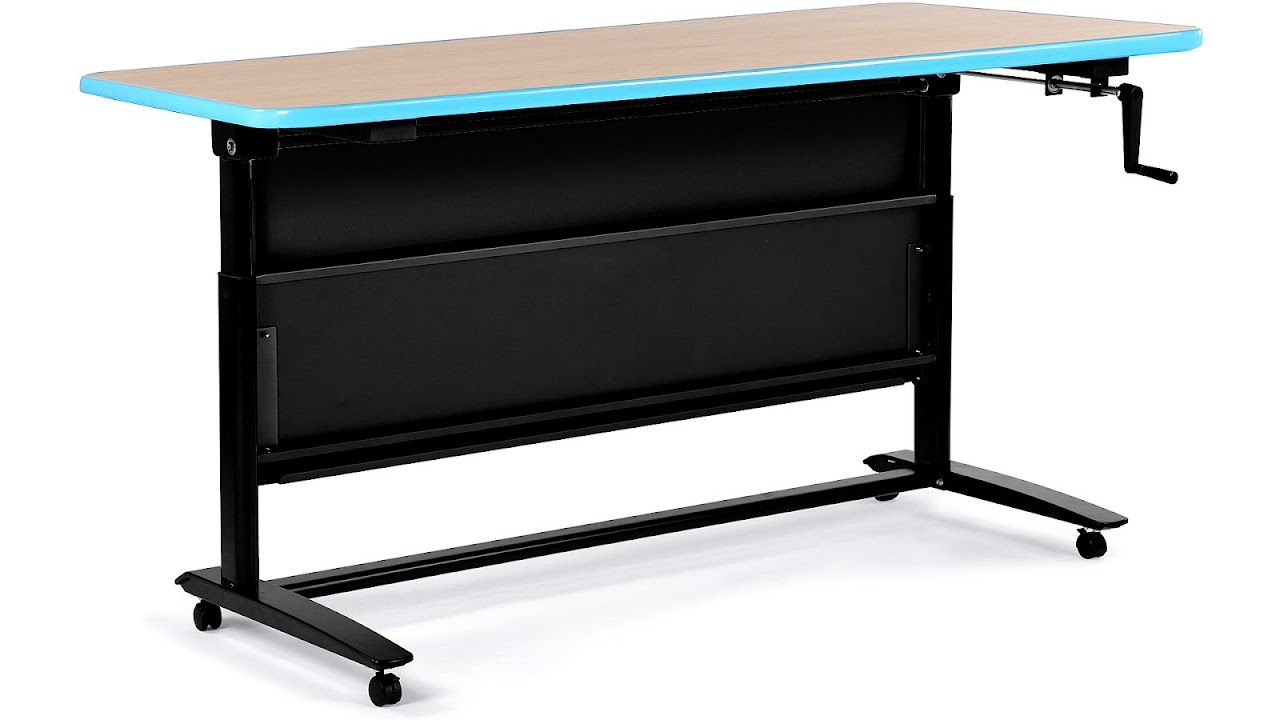
A standing desk or stand-up desk is a desk conceived for writing or reading while standing up or while sitting on a high stool. During the 18th and 19th centuries, standing desks were popular in the homes and offices of the rich.. Standing desks have regained some popularity due to purported health benefits, though such benefits have not yet been clearly established.
Notable users of standing desks include Leonardo da Vinci, U.S. founding father Benjamin Franklin, Thomas Jefferson, Supreme Court Justice Oliver Wendell Holmes Jr., British Prime Minister Winston Churchill, author Virginia Woolf, author and philosopher Albert Camus, songwriter Oscar Hammerstein II, author Ernest Hemingway, and former U.S. Secretary of Defense Donald Rumsfeld.

Maps, Directions, and Place Reviews
Variations
Standing desks have been made in many styles and variations. Standing desks may be specialized to suit particular tasks, such as certain variations of the telephone desk and desks for architectural drafting. Some standing desks may only be used while standing while others allow users to sit or stand by adjusting the desk height with an electric motor, hand crank, or counterbalance system. Some desks are also constructed like teacher's lecterns, allowing them to be set on top of an existing desk for standing, or removed for sitting.
While height of most seated desks is standardized, standing desks are made in many different heights ranging from 70 to 128 centimetres (28 to 50 in). Ideally the height of a standing desk fits the height of its individual user. With seated desks, adjusting the height relative to the user can be accomplished by adjusting the height of the user's chair. However, because users of a standing desk move around more than when seated, using a pedestal to adjust the user's height is not practical.
To solve this issue, a standing desk may either be custom-made, to suit the height of the user, or made with adjustable parts. For writing or drafting, the angle or slant of the surface may be adjustable, with a typical drawing table or table à la tronchin. If the desk is made for computer use, the legs may be adjustable. Another option is a platform made to sit on top of a regular seated desk that raises the desk's surface to a useful height for standing. Such platforms may be fixed height or adjustable.
A height-adjustable desk or sit-stand desk can be adjusted to both sitting and standing positions; this is purported to be healthier than the sit-only desk. Sitting for extended periods of time has been linked to detrimental health effects. Other options for sit-stand desks include smaller, desk-top models that can be placed on, or removed from an existing desk to switch between sitting and standing.
Some antique standing desks have an open frame with drawers, and a foot rail (similar to those seen at a bar) to reduce back pain. A hinged desktop could be lifted in order to access a small cabinet underneath it so that the user could store or retrieve papers and writing implements without needing to bend over or stand back from the desk.
Lift Up Desk Video
Purported health benefits and risks
The health benefits and risks of using a standing desk versus a seated desk are disputed. Research has linked health risks with both sitting and standing for prolonged periods. While many studies have examined the risks of prolonged sitting due to a sedentary lifestyle or prolonged standing due to working conditions, these studies do not directly answer whether or not using a standing desk provides more health benefits than risks, because they do not distinguish work or recreation at a standing desk from blue-collar work or sports. As of 2016, no high-quality, large, long-term, randomized study exists to determine whether sit-stand desks are effective at improving health. According to a 2015 review, there is "very low quality evidence that sit-stand desks can reduce sitting at work"; it is currently unknown whether such a reduction, if it does indeed exist, would result in improved health.
The health effects of sitting versus standing may include:
Source of the article : Wikipedia


EmoticonEmoticon